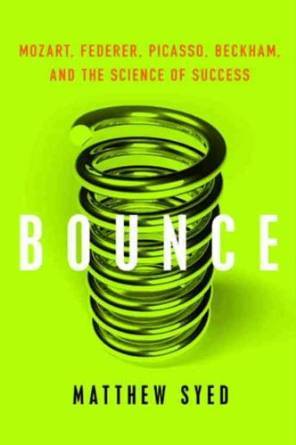More on this book
Community
Kindle Notes & Highlights
Purposeful practice was the only factor distinguishing the best from the rest.
the differences between expert performers and normal adults reflect a life-long persistence of deliberate effort to improve performance.”
that a minimum of ten years is required to reach world-class status in any complex task.
ten-thousand-hour rule.
An arbitrary difference in birth date sets in train a cascade of consequences that, within a matter of a few years, has created an unbridgeable chasm between those who, in the beginning, were equally well equipped for sporting stardom.
This is what Ericsson calls the iceberg illusion. When we witness extraordinary feats of memory (or of sporting or artistic prowess), we are witnessing the end product of a process measured in years. What is invisible to us—the submerged evidence, as it were—is the countless hours of practice that have gone into the making of the virtuoso performance: the relentless drills, the mastery of technique and form, the solitary concentration that have, literally, altered the anatomical and neurological structures of the master performer. What we do not see is what we might call the hidden logic of
...more
Top performers are not born with sharper instincts (in the same way that chess masters do not possess superior memories); instead, they possess enhanced awareness and anticipation.
it is practice, not talent, that holds the key to success.
the talent myth is disempowering because it causes individuals to give up if they fail to make rapid early progress.
Child prodigies amaze us because we compare them not with other performers who have practiced for the same length of time, but with children of the same age who have not dedicated their lives in the same way.
Psychologists call this “internal motivation,” and it is often lacking in children who start too young and are pushed too hard. They are, therefore, on the road not to excellence but to burnout.
Child prodigies do not have unusual genes; they have unusual upbringings.
iceberg illusion: onlookers took the performance to be the consequence of special abilities because they had witnessed only a tiny percentage of the activity that had gone into its making.
“When most people practice, they focus on the things they can do effortlessly,” Ericsson has said. “Expert practice is different. It entails considerable, specific, and sustained efforts to do something you can’t do well—or even at all. Research across domains shows that it is only by working at what you can’t do that you turn into the expert you want to become.”
purposeful practice.
world-class performance comes by striving for a target just out of reach, but with a vivid awareness of how the gap might be breached. Over time, through constant repetition and deep concentration, the gap will disappear, only for a new target to be created, just out of reach once again.
What is required is ten thousand hours of purposeful practice.
the very process of building knowledge transforms the hardware in which the knowledge is stored and operated.
Michelangelo, another artist often taken to exemplify the lightning bolt theory of creativity, put it: “If people knew how hard I had to work to gain my mastery, it would not seem so wonderful at all.”
Feedback is, in effect, the rocket fuel that propels the acquisition of knowledge, and without it no amount of practice is going to get you there.
The advantage of a coach is that he has a perspective—being able to look from the outside in—that the player lacks.
The talent theory of expertise is not merely flawed in theory; it is insidious in practice, robbing individuals and institutions of the motivation to change themselves and society.
Sure, clocking up thousands of hours of purposeful practice ultimately determines how far we make it along the path to excellence: but it is only those who care about the destination, whose motivation (to use the phrase in chapter 2) is “internalized,” who are ever going to get there.
Enron’s strategy was also flawed for a different, more insidious reason.
A culture that exalted talent above the possibilities of personal development.
A culture that promoted, nurtured, and ultimately entrenched the fixed mind-set.
he knew how to imbue his players with the growth mind-set: encouraging application, emphasizing personal responsibility, urging them to regard failure as an opportunity, not an indictment.
Anne Harrington of Harvard University makes the same point: “There is an innate capacity for our bodies to bring into being, to the best of their ability, the optimistic scenarios in which we fervently believe.”
“playing as if it means nothing when it means everything.”


